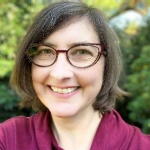WE ARE STEM & CTE in the Middle Grades
Workforce and Education Alliance for Realizing Equity in STEM and CTE (WE ARE STEM & CTE) in the Middle Grades.
Workforce and Education Alliance for Realizing Equity in STEM and CTE (WE ARE STEM & CTE) in the Middle Grades.
WE ARE STEM & CTE in the Middle Grades is a national collective impact network of like-minded organizations at the national, state, and local level that are committed to systems change that creates a culture of success for *underserved students in STEM education and Career Technical Education (CTE) in the middle grades (5-10).
With the implementation of the stronger equity provisions in Perkins V and the continuing emphasis on equity and inclusion in STEM education, the time is right to be able to impact STEM and CTE systems at the state and local levels. This work is even more urgent because of the equity gaps in high quality CTE and STEM programs exacerbated by COVID-19.
This NSF INCLUDES planning grant (2040783) supports the development of a collective impact alliance that will build on:
NAPE’s co-PIs for WE ARE STEM AND CTE IN THE MIDDLE GRADES are from the California Department of Education, the South Carolina Department of Education, the Utah STEM Action Center, and Butler Tech in Ohio. Other Partners represent national, state and local interest and commitment in creating a national collective impact network to tackle this problem.
The planning process will focus on three design elements of the collaborative infrastructure:
The process will also include an external evaluator who will conduct a formative evaluation and whose expertise will be utilized in the goals and metric setting. The planning process will include leadership development, partnership expansion, crowdsourcing, and virtual convenings resulting in a strategic plan for a national collective impact network to address equity gaps in STEM and CTE.
This 16-month planning grant (Nov 2020-Feb 2022) represents a national public and private partnership of large well-resourced organizations brought together to collaborate on addressing the broadening participation challenges in STEM and CTE, thereby advancing the knowledge of how planning creative social innovations, such as collective impact, can lead to transformative systems change. The alliance will foster an ecosystem with the capacity to inform and empower educational stakeholders to create systems changes to ensure the participation of students from underserved groups in STEM and CTE.
We are STEM and CTE (The Workforce and Education Alliance to Realize Equity in STEM and CTE) in the Middle Grades is an NSF INCLUDES planning grant that will bring together national, state, and community leaders in STEM and CTE to form a national alliance using collective impact to change our education systems and increase participation in STEM and CTE from underrepresented populations.
Collective Impact is a collaboration model for large-scale systems change. It requires the commitment of a group of cross-sector actors to a common agenda for solving a complex social problem. In this case, the challenge is how to broaden participation for underserved students, including Black, Indigenous, People of Color, and individuals with disabilities and individuals from low-income backgrounds.
NAPE serves as the backbone organization, Principal Investigator and convener for the WE ARE STEM & CTE in the Middle Grades NSF INCLUDES planning grant. The mission of the National Alliance for Partnerships in Equity (NAPE) is to build educators’ capacity to implement effective solutions for increasing student access, educational equity, and workforce diversity.
NAPE also leads alongside four CO-PI’s for this grant: Butler Tech of Ohio, California Department of Education, South Carolina Department of Education, and Utah Stem action Center.
Using the collective impact pillars as workgroups, each workgroup will contribute information on their focus for the NSF INCLUDES Alliance Proposal that will be submitted in January 2022. Workgroup plans and descriptions can be found here.

Minahil Haroon recently graduated from the Butler Tech Bioscience Center and Lakota East High School. She was born in Pakistan, moved to the States at the age of five, but visited her birth country many times while growing up. She is highly connected to her culture and finds value in learning about people of other cultures and races. She works hard to be an advocate for young adults in her community suffering from trauma due to war crimes. Minahil will be attending the University of Cincinnati majoring in Medical Sciences and Microbiology, with an end goal of pursuing a Cardio Thoracic Surgery career.

Hakan Kariparduc is an upcoming senior at Beehive Science & Technology Academy in Utah. Taking several CTE classes has helped him gain a different perspective on life and changed his way of thinking. He is now able to implement the processes and knowledge he learned in real-life circumstances. Hakan initially took these classes because he wanted to land an internship and being CTE certified would’ve looked very appealing in applications. But that has changed and in his words, “I would’ve never guessed that its impact on me would exceed anything academic or extracurricular. If you are thinking about taking CTE classes, don’t think. Just do.”

Tekiah S. McClary is a 2021 graduate of Spelman College where she obtained her B.S. in biology with the highest Latin honors, Summa Cum Laude in 3 years. As a student at Spelman, Tekiah was very active. She was a member of the LINCS (Living and Learning in an Interdisciplinary Networked Community of STEM Scholars) Program, the NIH Research Training Initiative for Student Enhancement (RISE) Program, a 2020 John Lewis Social Justice Scholar, a peer tutor, and an active member of both the Alpha Lambda Delta and Tri-Beta National Biological Honor Societies. Tekiah hopes to positively impact both the biomedical science world and society through meaningful discoveries, advancements, and dismantling oppression within health care systems. Tekiah was raised in Orangeburg, SC graduating Valedictorian in 2018 from the Orangeburg School District 5 High School for Health Professions. In the fall, Tekiah will be starting an ethics fellowship at the Emory Winship Cancer Institute.

Lenese Reynolds. As the Executive Director of Shades of STEM, and a mother of children in STEM professions, Lenese Reynolds has created transformative model to address underrepresentation in the STEM field. At Shades of STEM (SOS) “Our goal is to inspire Children of Color, elementary-aged children, to pursue a career path in the fields of Science, Technology, Engineering, or Math (STEM). SOS realizes through education and mentorship that STEM fields become familiar and normalized.” Shades of STEM leverages support networks for students to successfully engage in STEM pathways, by engaging students’ families, community members, school and industry leaders to take an active role in helping students achieve their potential.

Silvia C. Ramos, M.S. serves as the Senior Director of Programs at The National Alliance for Partnerships in Equity (NAPE). For over 20 years Silvia has been a transformative equity strategist, partnering with educational, community and non-profit organizations to assist them in achieving systemic equity and thereby creating more equitable outcomes.

Mimi Lufkin has over 40 years of experience as an educator advocating for access, equity and diversity in education and workforce development. From 1994 to 2018, Mimi served as the Chief Executive Officer of the National Alliance for Partnerships in Equity (NAPE). Mimi continues to support NAPE in her retirement as CEO Emerita.

Selena Connealy, PhD, is the Interim Associate Director of NM EPSCoR. Connealy has more than 25 years of experience with project management for educational and cultural organizations, and expertise in broadening participation and informal science learning. She served on the IM STEM Steering Committee and the Communication and Outreach Workgroup.

Ginger Fitzhugh, M.M., is a senior research associate and program evaluator at Education Development Center. Fitzhugh has more than 15 years of experience leading evaluations that examine programs targeted to ensure all students receive strong STEM educations. She led the evaluation of the NSF-NCLUDES funded IMSTEM project.
IM STEM was a pilot collective impact network of STEM and CTE educators and leaders across six states (CO, ID, NM, NV, UT and WY) working to support equity at key transition points (middle school to high school and high school to college) for underserved students in STEM and CTE.
IM STEM Network Meetings and Newsletter archives are available to help you learn more.
This report shares the experiences of the members of the IM STEM network as they piloted the use of collective impact as a model for creating state level systems change to impact equity gaps in STEM and CTE. The authors share the success, challenges and recommendations for those who would want to consider implementing a similar model.
A tool for evaluating the factors that influence access and success for underrepresented students in STEM education.

This material is based upon work supported by the National Science Foundation under NSF INCLUDES 2040783. Any opinions, findings, and conclusions or recommendations expressed in this material are those of the author(s) and do not necessarily reflect the views of the National Science Foundation.